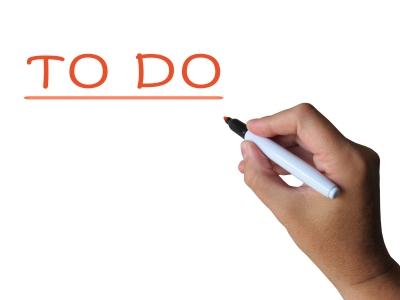 You don’t have to hire someone to slap you every time you turn to Facebook. That was the extreme step blogger Maneesh Sethi took to be more productive, detailed in Why I Hired a Girl on Craigslist — and How I Quadrupled My Productivity.
You don’t have to hire someone to slap you every time you turn to Facebook. That was the extreme step blogger Maneesh Sethi took to be more productive, detailed in Why I Hired a Girl on Craigslist — and How I Quadrupled My Productivity.
But to be productive, you DO need to focus on what’s important. So said my colleague and friend Jane Langille at a recent meeting of IABC/Toronto’s Professional Independent Communicators.
“Multitasking equals an epic fail,” Jane told the group, describing a multitasking incident that involved a knife and her thumb. “If you’re paying attention to one thing, you’re not paying attention to the other.”
Jane shared author and consultant David Allen’s Five Simple Steps That Apply Order to Chaos:
1. Capture
Collect all of the “things to do” that have your attention – big and small, personal and professional. Use an in-basket or simple pencil and paper, or tools like MindNode, Coggle, FreeMind or XMind.
2. Clarify
Look at each item. Can you act on it? If you can do it in less than two minutes, do it now. If not, defer it to a scheduled time, or delegate it (outsource your housecleaning, gardening, bookkeeping and so on). If you can’t take action, let it incubate, file it or trash it. Note that if you are filing it, be sure you have a searchable system.
3. Organize
Get those items out of your head and onto a list. Set up buckets for projects, areas of responsibility, “someday/maybe.” Use your calendar, not your to-do list, to schedule meetings, phone calls, interviews, etc. Jane suggested apps like Things, Daylite or Evernote, or organizing systems Bullet Journal or Planner Pad.
4. Reflect
Review and reflect on your system often: daily, to plan your time for the day, and weekly, to clean up your lists, make sure items are in the right spot and plan your upcoming week. Delete as necessary!
5. Engage (aka take action)
“Do or do not, there is no try,” as Yoda said in The Empire Strikes Back. Take action. Organize your day into 25-minute chunks of time for work, followed by five minutes for a break away from your computer screen. (This Pomodoro technique also has apps, but a kitchen timer will do fine.)
Email is a particular distraction that affects productivity. Tips for keeping your in-box in check include:
- Don’t keep mail as a “to do” list. Move tasks to your proper list and delete the email.
- Use set times to process your mail (using the Clarify rules above).
- Set up rules, folders and filters to automate as much as you can.
- Unsubscribe from things you no longer read or promotional mail you don’t want.
- Turn email notifications off to let you focus on work.
- If you want to be really gutsy, declare email bankruptcy — wipe everything out and start over. If someone sent you an important email, they will resend, won’t they? (As Jane said, gutsy!)
“Being more productive will help you get more things accomplished, increase your income and have a better work/life balance this year,” Jane encouraged us.
The start of the year seems like a great time to do it.
Check Jane’s blog for the complete list of resources she mentioned in her talk, including apps, articles, books, tools and systems.
Image: Stuart Miles and FreeDigitalPhotos.net.
